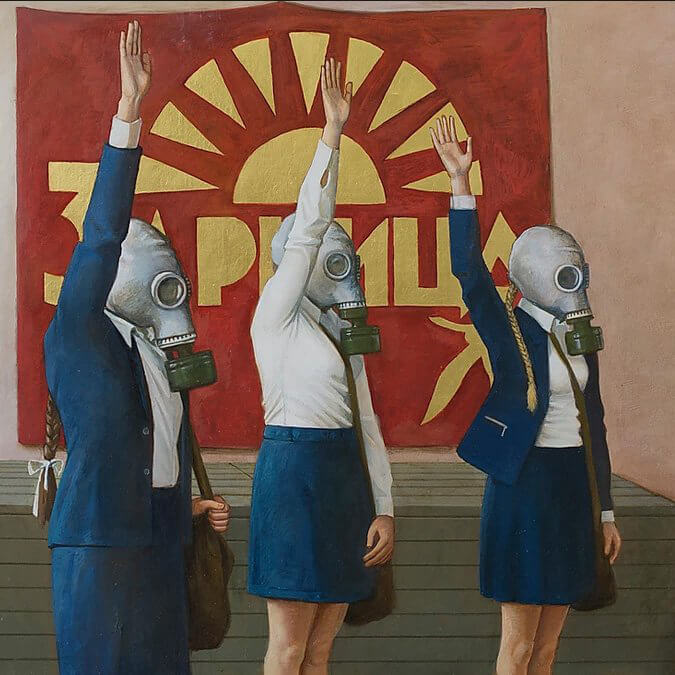Inspired by Soviet educational posters, the two series of paintings presented in Maria Safronova’s exhibition “What If?” portray the lead-up to and the aftermath of a cataclysm. In her “Civil Defense” works (2017–) dystopian scenes of student life slip into Foucauldian allegories of power and social regulation: Children learn how to assemble Kalashnikov rifles in a classroom; teenagers wear hazmat suits and perform rescue drills in a biohazard area. On the contrary, Safronova’s “Cabinets” series (2019–) shows us desolate spaces: abandoned schools, libraries with books scattered on the floor, and empty swimming pools. Neither body of work offers any indication of what caused these scenarios.
As a sort of old-schooler, Safronova is stingy with the explanations. A graduate of the Surikov Institute, a conservative academic art institution in Russia, she continues the tradition of late Soviet painting, typified by faint colors, simplified compositions, neutral backgrounds, and muted details. Unlike most of her colleagues from the school, however, the artist has embraced the contemporary art context, showing her austere, anxious paintings of classrooms, for instance, in the fifth edition of the quite progressive Ural Industrial Biennial last year.
Humanity doesn’t need a novel virus to destroy itself—we had been seeing to that already, as Safronova’s fictional apocalypses so uncannily suggest. However, in her painting Abandoned Lot, 2020, which shows children at play with a ball and a kite between endless gray apartment blocks, the artist suggests that humanity might also be the cure.
Maria Safronova at Triumph Gallery
Actual and fictional, or fictionalized, catastrophes have been increasingly mixed up in modern consciousness. From recent ecological disasters resonating with HBO’s Chernobyl and the disintegration of half of all life in Marvel’s Avengers: Infinity War, to speculative discussions about the dismantling of democracy in the wake of COVID-19, the postapocalyptic turn in culture and society is well underway, and we are only belatedly taking notice.

